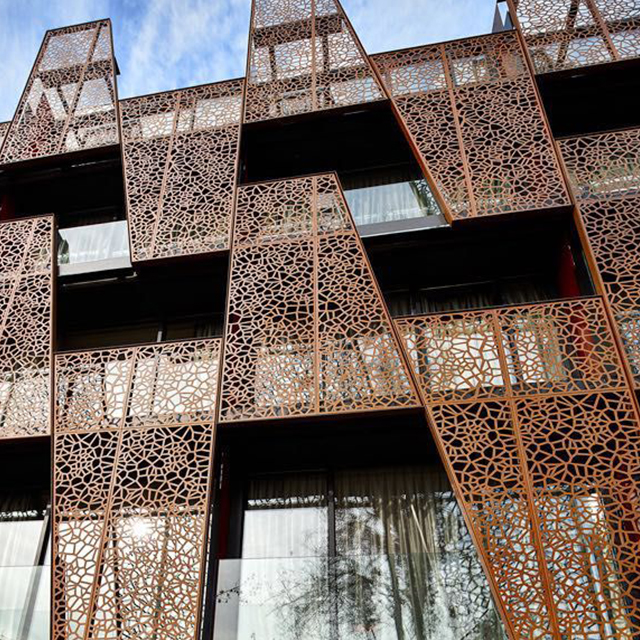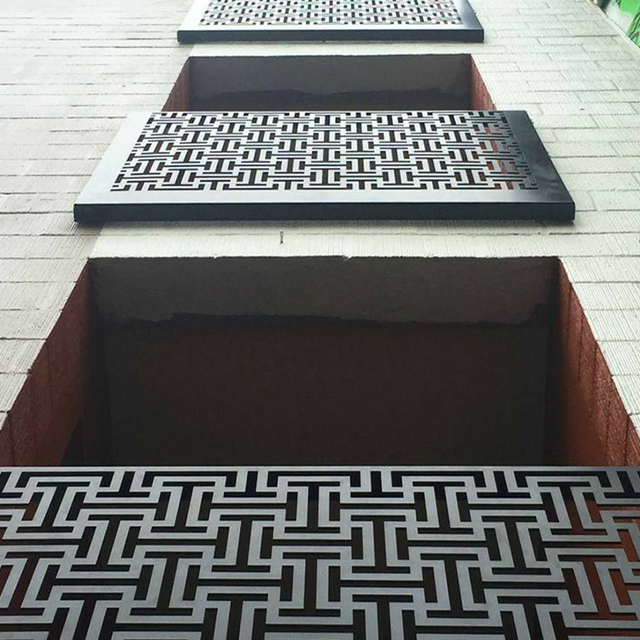Aluminum wall cladding refers to the use of aluminum panels as a protective and decorative layer on the exterior or interior walls of a building. This type of cladding is popular in modern construction due to its lightweight, durability, and versatile design capabilities. It enhances a building’s aesthetics while offering protection against weather and environmental factors.
Key Features of Aluminum Wall Cladding
- Durability and Strength
Aluminum is resistant to corrosion, UV rays, and extreme weather conditions. This makes it ideal for long-term use in various environments. - Lightweight Material
Compared to other cladding materials like steel or stone, aluminum is much lighter, reducing the overall structural load of the building. - Design Flexibility
Aluminum panels are available in various colors, finishes, and textures, including smooth, brushed, perforated, and wood-grain effects. They can also be molded into flat, curved, or custom shapes. - Low Maintenance
Aluminum cladding is easy to clean and requires minimal maintenance. Certain finishes, such as PVDF or anodized coatings, add self-cleaning and anti-staining properties. - Environmentally Friendly
Aluminum is 100% recyclable, making it an eco-friendly option for sustainable construction practices.

Types of Aluminum Wall Cladding
- Solid Aluminum Panels
These are thick, single-layer panels used for robust applications. They provide high strength and durability. - Aluminum Composite Panels (ACP)
ACP consists of two thin layers of aluminum with a non-aluminum core. They are lighter and often used for decorative purposes. - Perforated Aluminum Panels
These panels have cut-out patterns for ventilation or aesthetic purposes, commonly used in facades and sunshades. - Insulated Aluminum Panels
These panels are layered with insulation material, improving thermal performance and energy efficiency.
Applications of Aluminum Wall Cladding
- Commercial Buildings
Used in office complexes, malls, and skyscrapers to achieve a sleek and modern appearance. - Residential Buildings
Popular for both exterior facades and interior walls, especially in urban residential projects. - Industrial and Institutional Buildings
Provides durable and low-maintenance cladding for warehouses, factories, and educational institutions. - Landmark Projects
Aluminum cladding is often used for unique designs in museums, airports, and cultural centers.
Advantages of Aluminum Wall Cladding
- Weather Resistance
Protects the building structure from rain, wind, and sunlight. - Improved Aesthetics
Enhances the appearance of buildings, offering modern and stylish finishes. - Thermal and Acoustic Insulation
When combined with insulation materials, aluminum cladding improves energy efficiency and noise reduction. - Cost-Effective
Though the initial cost may be higher, its durability and low maintenance lead to cost savings over time.
Conclusion:
Aluminum wall cladding is a practical and versatile solution for modern architecture, combining functionality, durability, and design flexibility. Its wide range of applications makes it a preferred choice for both commercial and residential projects.

